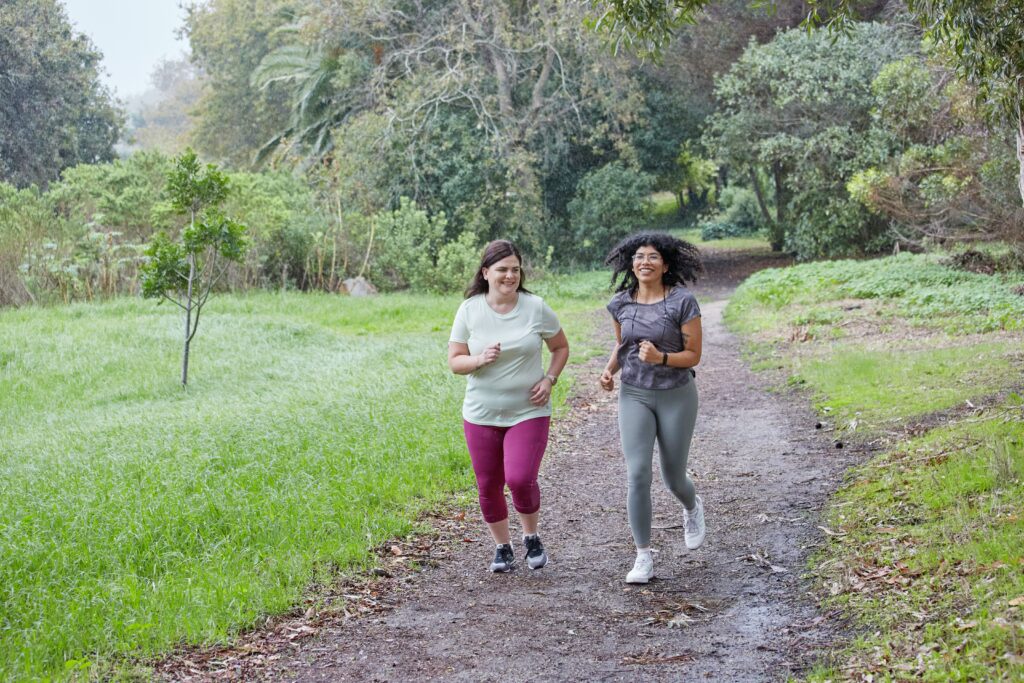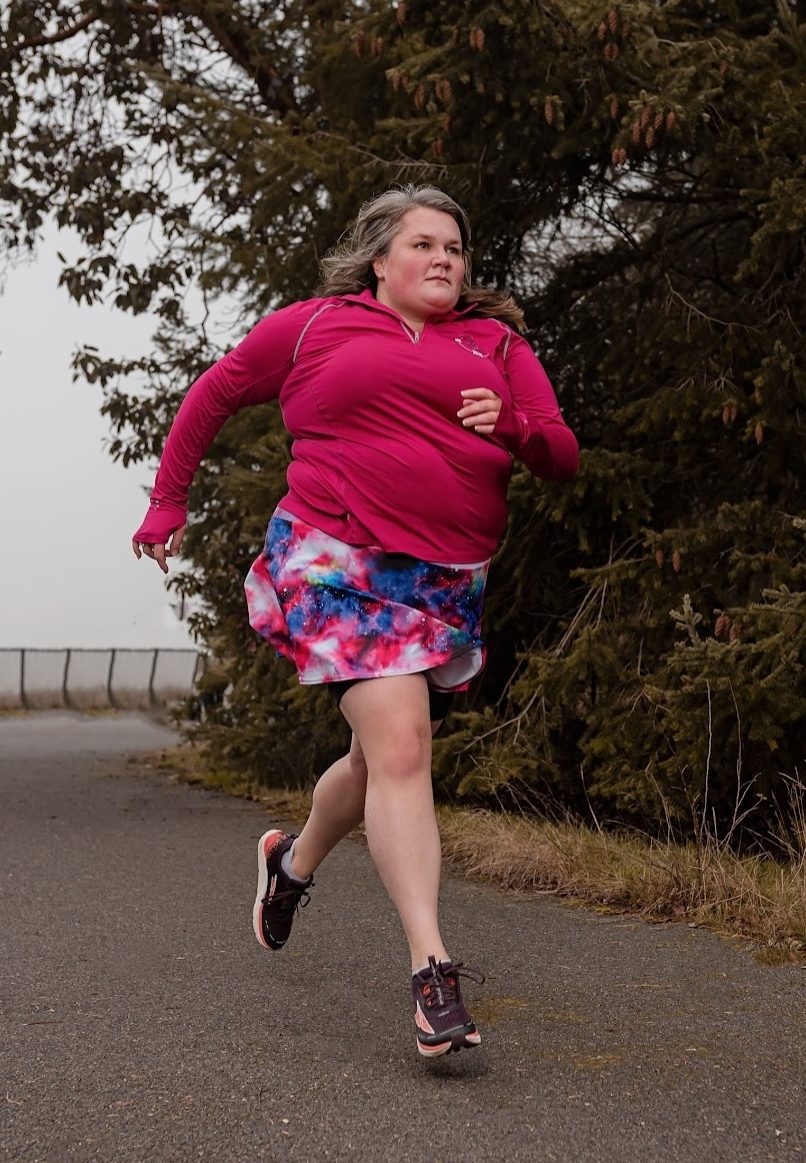Unlock Your Running Potential: Embracing Individuality and Ignoring the Noise

Pain and injury when you first start running is a legitimate concern. It’s one of the most common reasons people give for not running. Maybe they hurt themselves in the past. Maybe they’ve seen others end up injured. Or maybe they’ve heard the message that “running is bad for your joints.” (Spoiler: it isn’t, studies show it increases joint strength. Obviously, if you have joint injuries, consult your doctor.) Being able to unlock your running potential means embracing the individuality of the sport.
Running: A Natural Human Ability
The human body has evolved to run. Humans are literally the best endurance athletes on the planet. Barring disability that affects mobility or energy (not every human body CAN run for various reasons), most humans are capable of running. No matter their size, shape, or fitness level.
The key here is to meet your body where it is now. Drop the idea that your running has to look, feel, sound, or be as fast as anyone else’s. Also – lower your expectations.
Individuality in Running
That last sentence may seem counterintuitive, especially in our, “Go hard, never miss a Monday!” fitness culture. We’re supposed to expect that we’ll be able to reach whatever goals we’ve set for ourselves, and we want to reach them NOW. We see the people in our running groups posting 7-minute miles and think we can go out there and run a whole mile as fast as we can, and that’s going to feel good and we’ll want to keep doing it.
For most of us, that’s bullshit.
The Reality of Expectations
If you’re able to walk out the front door and run a 7-minute mile, you are most likely already an endurance or strength athlete, with youth on your side, as well as genetics. Yes, it happens. But the reality is, it doesn’t happen for most of us. In chasing it, many new runners injure themselves and don’t come back to running.
Lowering your expectations and meeting your body where it’s at right now are key to maintaining a running practice. There are some things that most of us have to do to be able to run without injury, and the first is that you have to START SLOWLY.
Starting Slow: The Key to Longevity
Be okay with a 15-plus-minute mile. Running for 10, 15, or 20 seconds before walking for several minutes, that is acceptable. Not being able to control your breathing at first, not a problem. Know that every run is an experiment, and you have to do it over and over again to learn what works for your body.
You won’t have the right shoes at first. You won’t have the right clothes. You’ll be out of breath. You won’t be able to run for very long. You’ll experience chafing in places you didn’t know you had. Something will start hurting.
Reflective Running
However, if you’re reflective on your running practice, you’ll make a note of each of these things. If you’ve started slowly enough, your breathing will level out. Wear long enough shorts and your thighs won’t chafe. Adjust the way your foot lands or the way you squeeze your butt on each stride, the little niggling pain in your knee will subside. Include strength training (you can do this at home with bodyweight exercises), you’ll find your endurance growing.
Running is a skill, and despite the fact that our bipedal bodies have evolved to do it, that doesn’t mean that we instinctively know how to do it correctly when we first walk out the front door. Especially if we’re comparing ourselves to others who have more training and experience, and, yes, the benefit of genetics.
The Runner’s Journey: An Ongoing Experiment
The everyday runner, the fat runner, the slow runner, the new runner, even the experienced and elite runner – we are all just ongoing experiments. Those of us who have been doing this for a long time have simply figured out how to make it work the best for our bodies. A lot of us, myself included, have been injured, or chafed, or DNF’d (Did Not Finish a race). Each of us who have found community and peace within running do have one thing in common: every setback or failure is a learning opportunity.
Recap: Strategies for Safe Running
To recap: Meet your body where it’s at right now. Lower your expectations. Slow down. Maintain a growth mindset. Strength train. Unlock your running potential.
No, it’s not easy. It does take consistency and time and a willingness to suck at something, and to change your approach until you get it right for you. But don’t let a fear of injury or failure keep you from trying something you think you might enjoy. Find yourself a community like The Movement Mindset, or a running coach (like me!), to help you through the initial fears and setbacks and give you a path forward.
There are ways for runners of all types to run safely, and to avoid injury, even in the beginning. Give it a try and be willing to suck at something new as this will help you to unlock your running potential.
ADVERTISEMENT

Marci Braithwaite is an RRCA- and USATF-certified running coach who focuses on beginner runners and athletes in larger bodies using Size-Inclusive and HAES-aligned principles. She has completed over 100 races of various distances in her 12 years of running, including a marathon, and she has her sights set on completing a 50k in 2023









